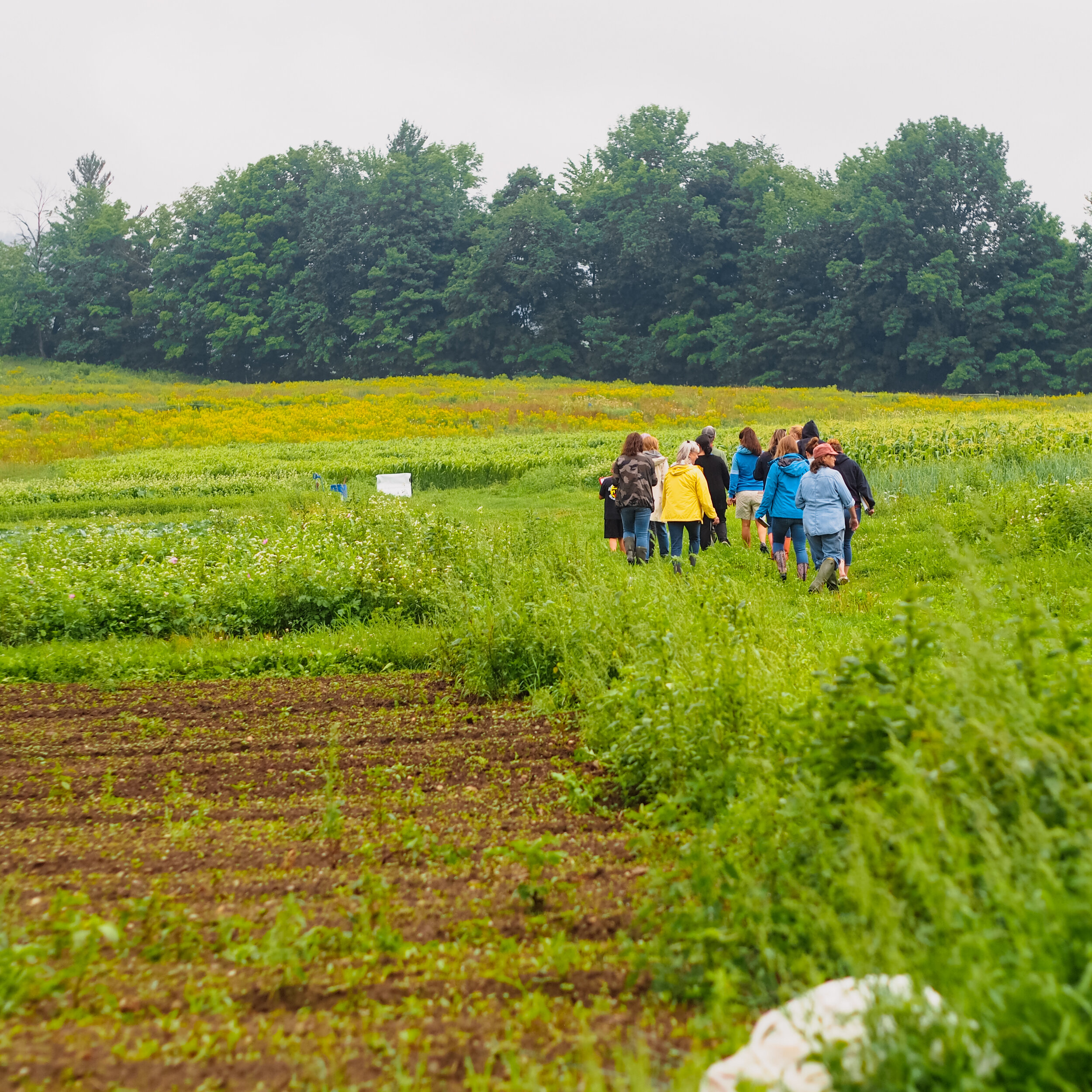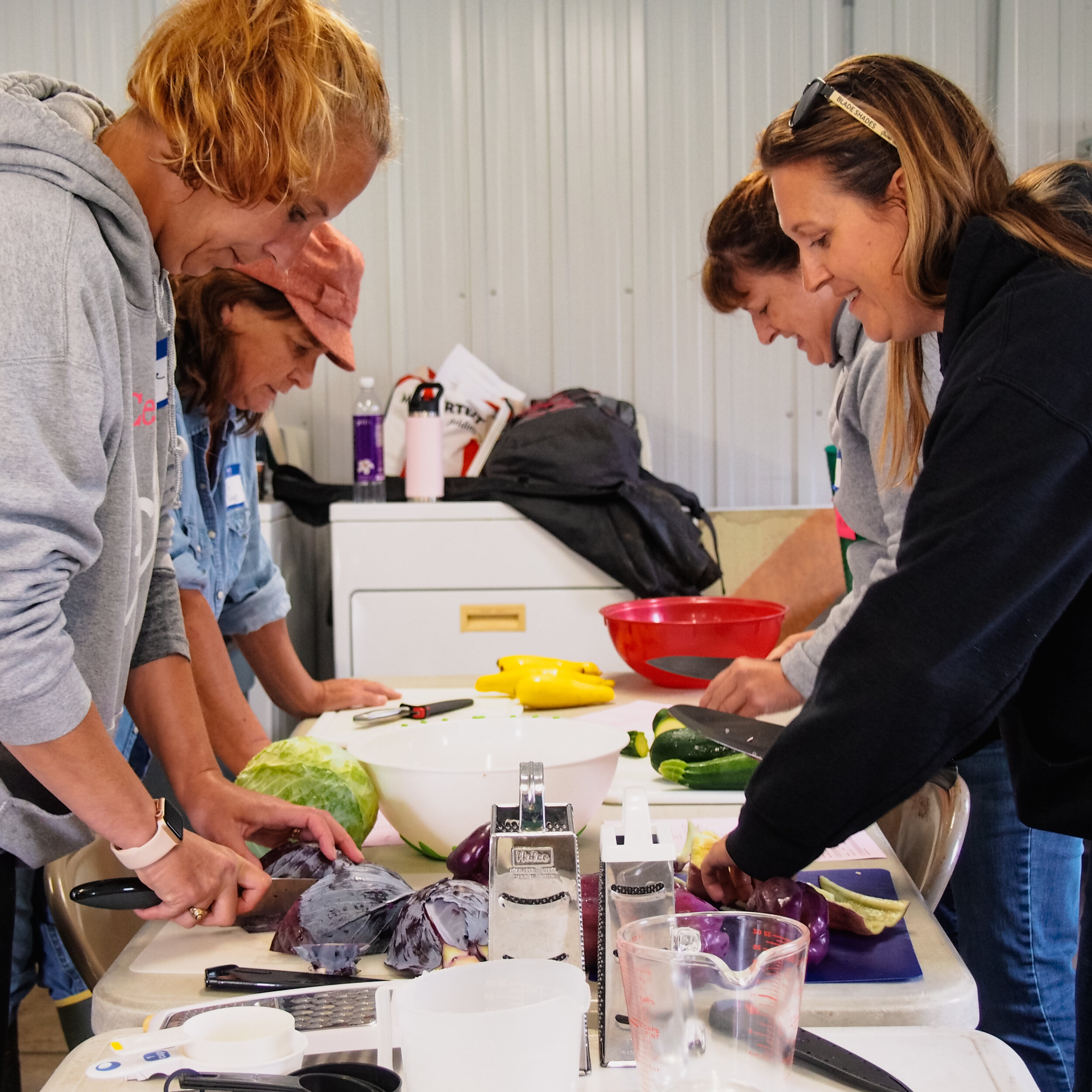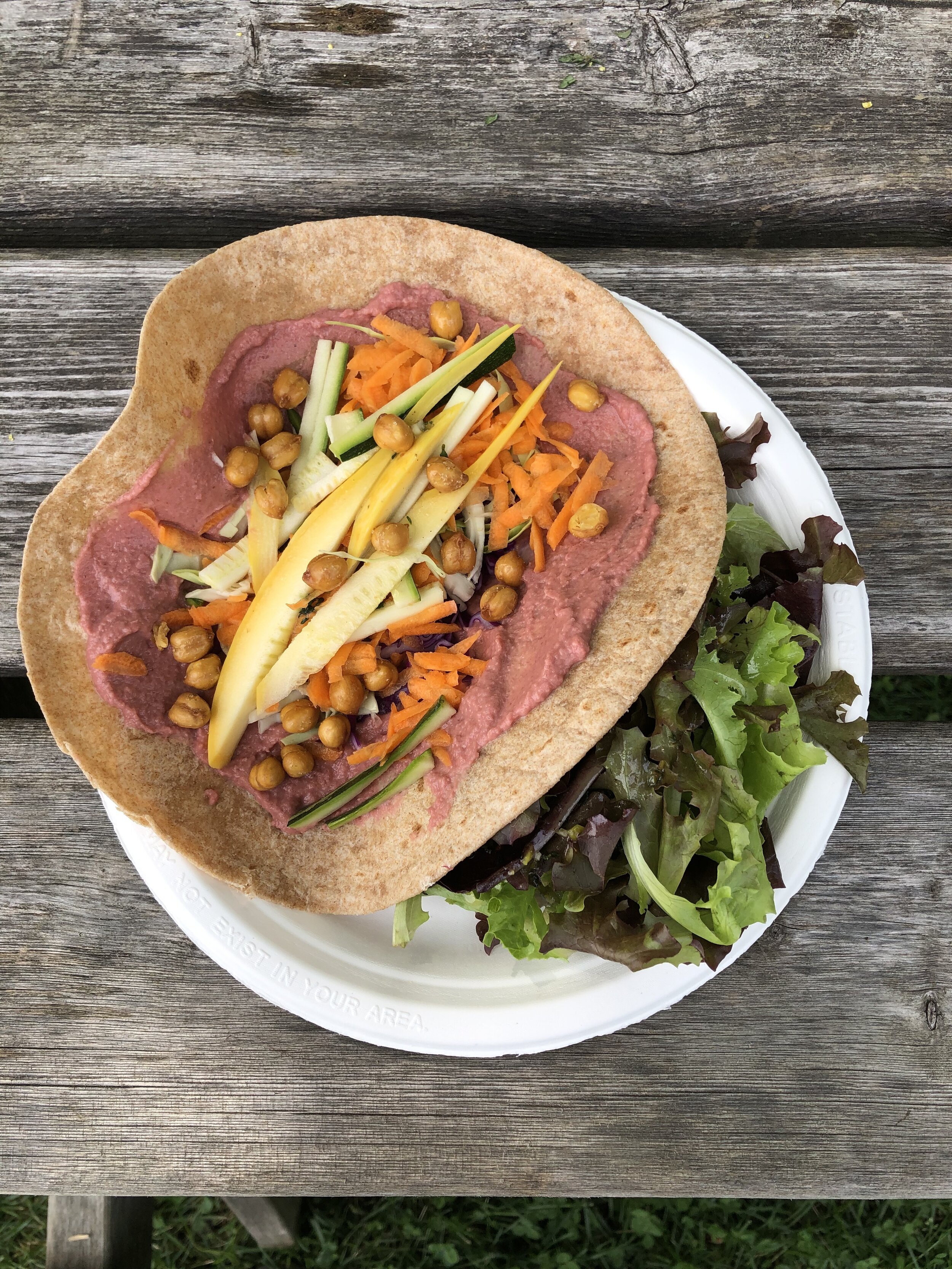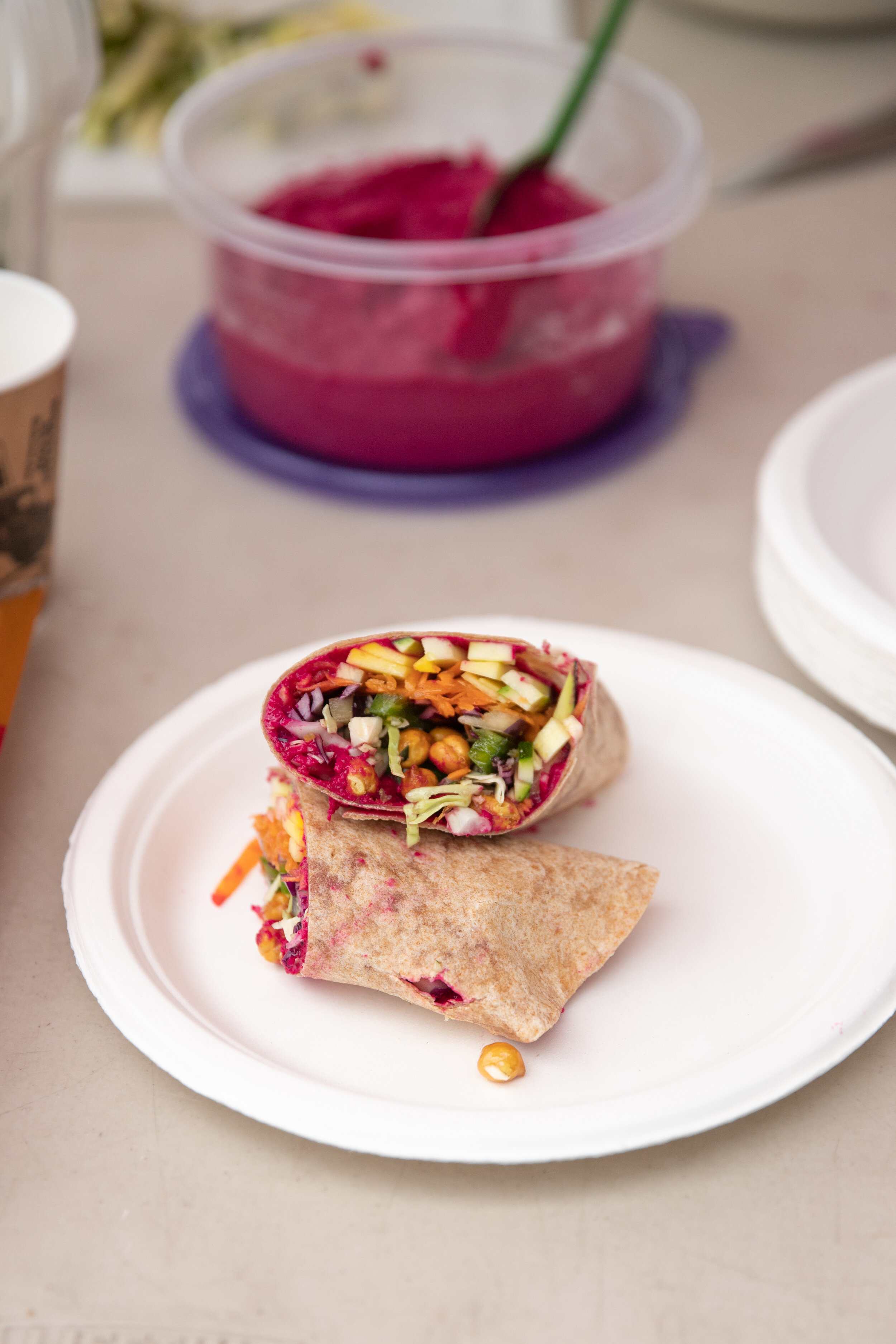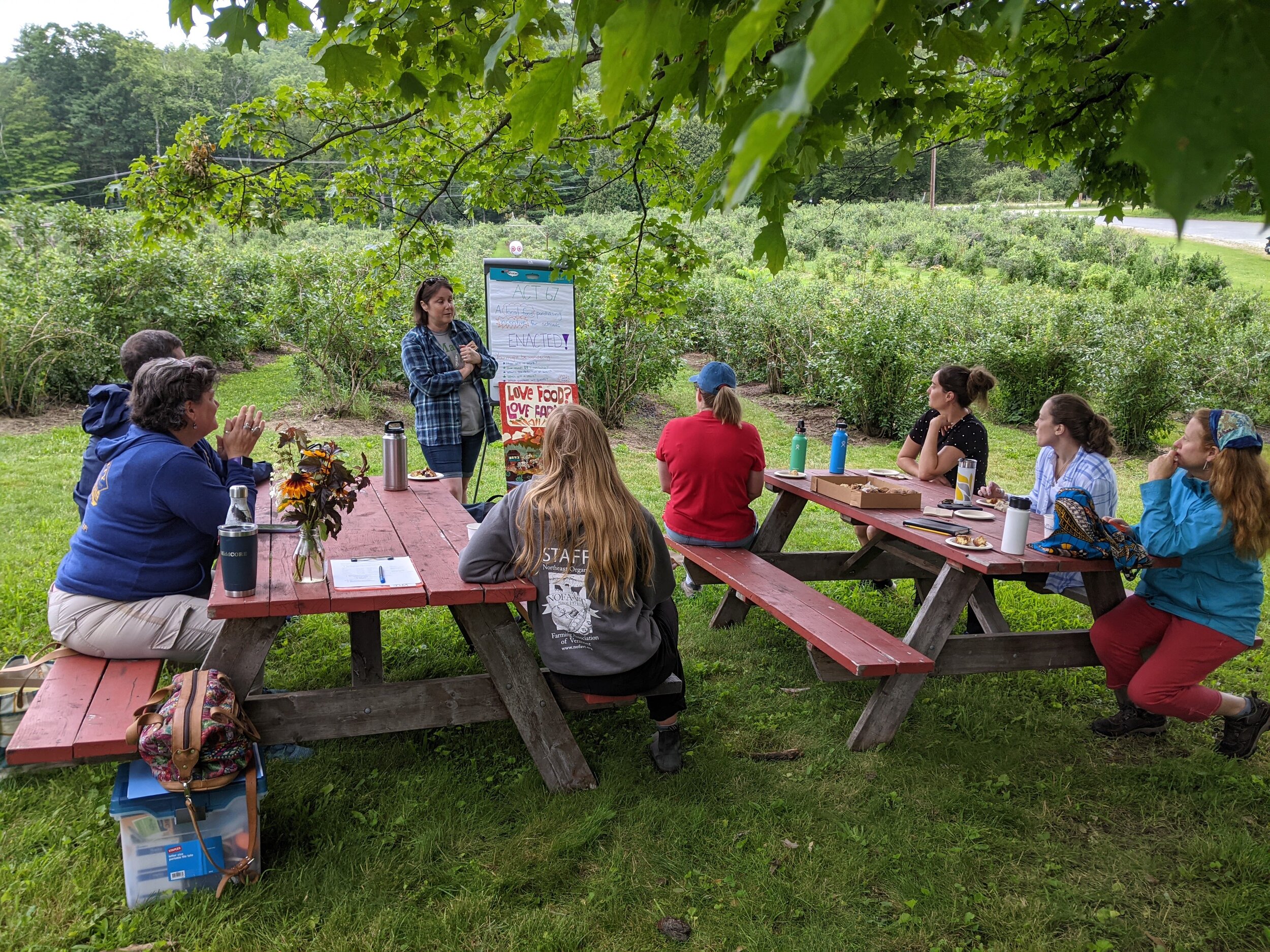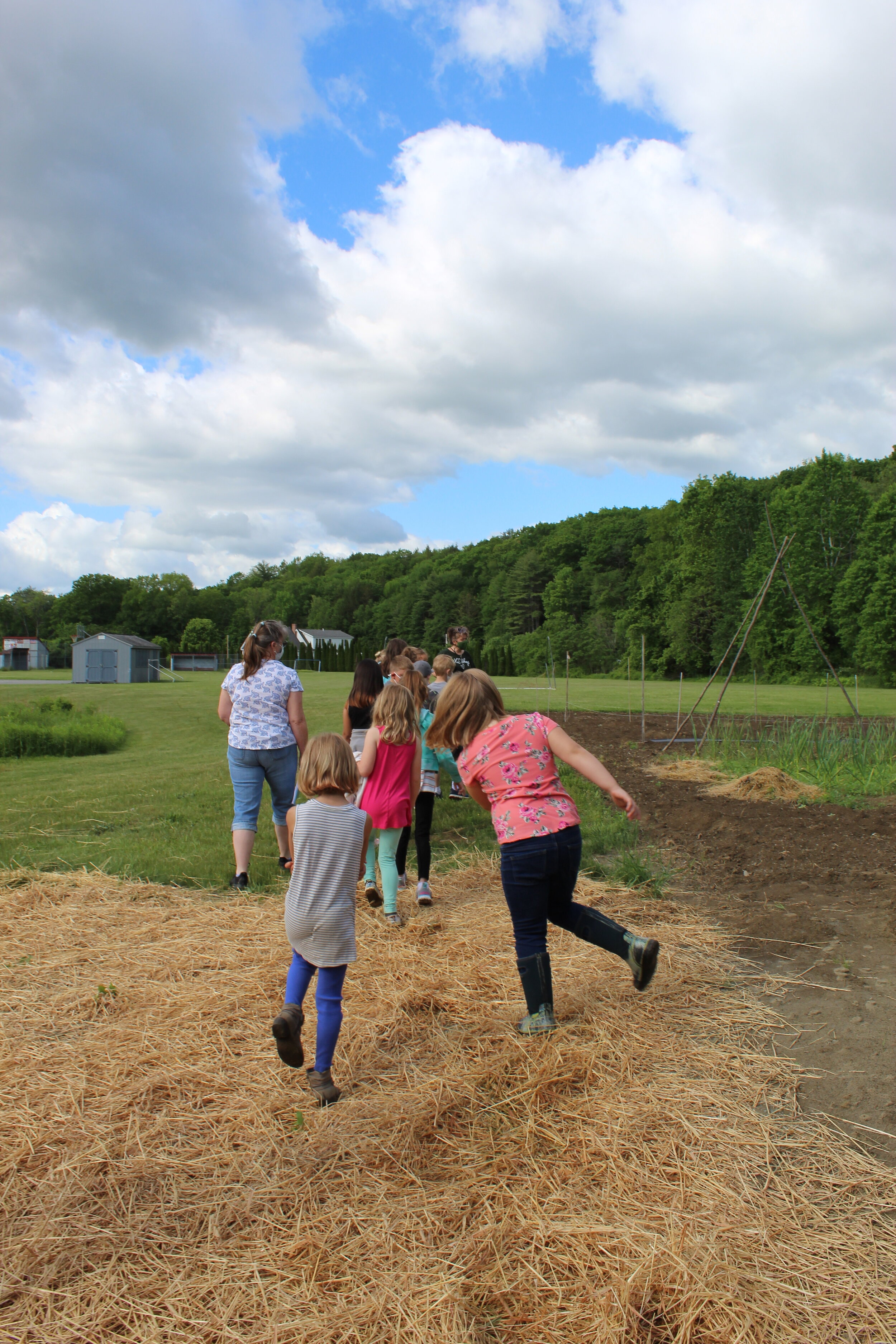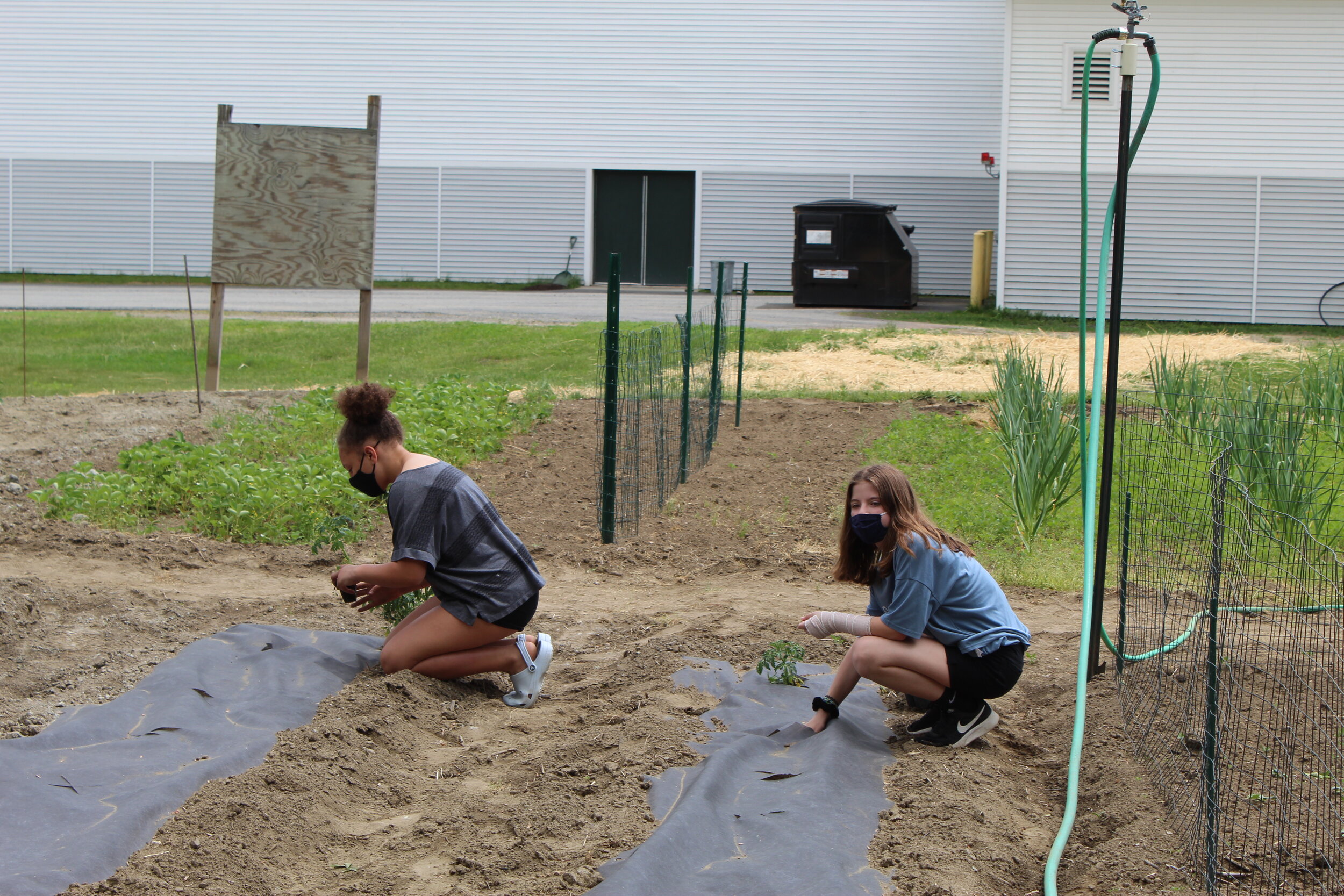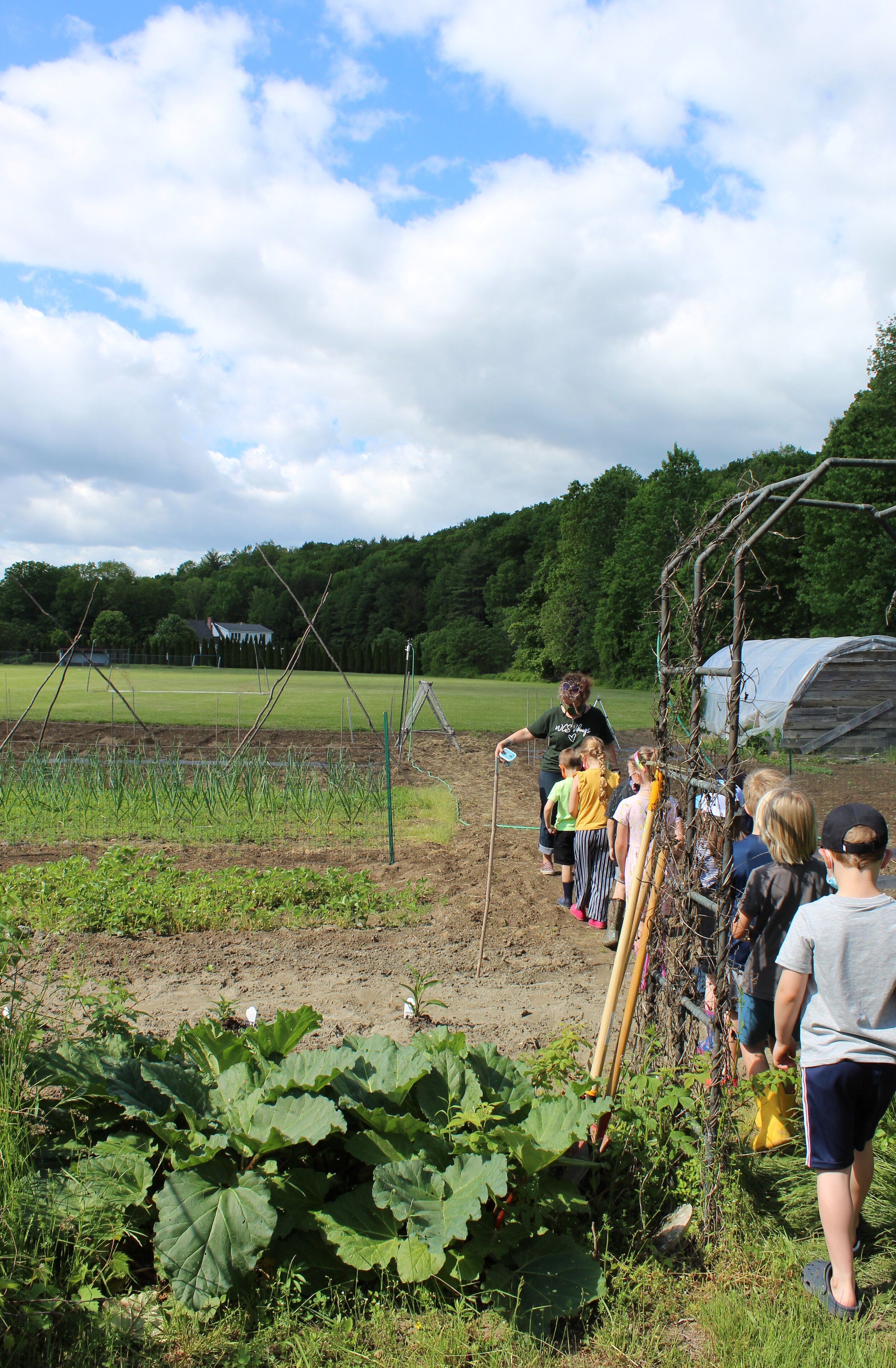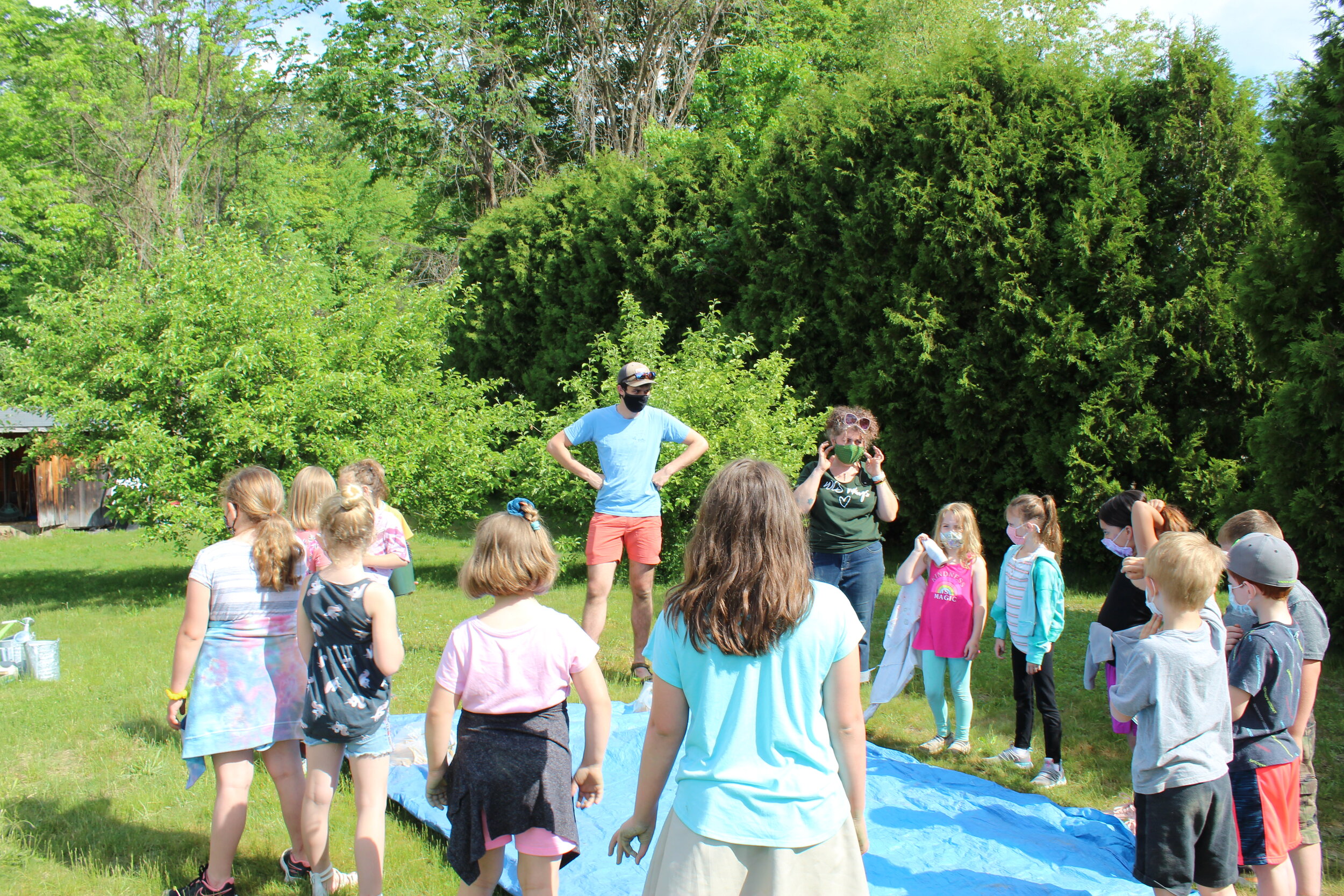Julianne got her shovel in the dirt last May, helping to plant a new orchard at Dummerston School with trees donated by Scott Farm.
“Watching children prepare beds, plant seeds, and nurture young plants with their teachers was a highlight of our last academic year together and critically important during a year of unprecedented challenge,” states Julianne Eagan, a first-time principal and new administrator at Dummerston School during the 2019-2020 school year.
We're celebrating Julianne Eagan as our Farm to School (FTS) Champion this month! We applaud her efforts, which have resulted in getting a new Farm to School program launched on a solid foundation at the school and keeping the momentum going despite the challenges of the past two school years. Julianne finds this work energizing, stating, "I have been so inspired by the Dummerston School community's passion and commitment to expanding our food production at Dummerston School, integrating the garden into our school curriculum, establishing partnerships with local farms, and realizing the potential of our beautiful and sunny rural campus.”
Julianne chatting with colleagues about Farm to School success stories at a recent Food Connects event.
Julianne serves as an active member of the Farm to School committee, participating in monthly committee meetings and prioritizing this important work at the school. Some of the new Farm to School initiatives at Dummerston School that have benefitted from Julianne’s leadership include:
Launching a share table at school (pre-pandemic), which they hope will continue when school meals return to something more normal
Starting a school breakfast program
Hosting a workshop for all staff on the topic of trauma and nutrition (led by Sheila Humphreys and Ali West)
Moving the school garden to a sunnier, more centrally located space adjacent to the playground so that students can have the option of gardening during recess
Planting a small apple orchard on campus last spring
Finding creative ways to increase funding and capacity for Farm to School related activities
Securing funding to hire a part-time garden coordinator for the school
Julianne says, “I look forward to continuing to work with Food Connects to foster this growth and learning for years to come,” and we look forward to continuing our partnership with Julianne and Dummerston School. Dummerston School and WSESD are very lucky to have you as a leader. Bravo, Julianne!
Dummerston School’s garden is thriving this year!





